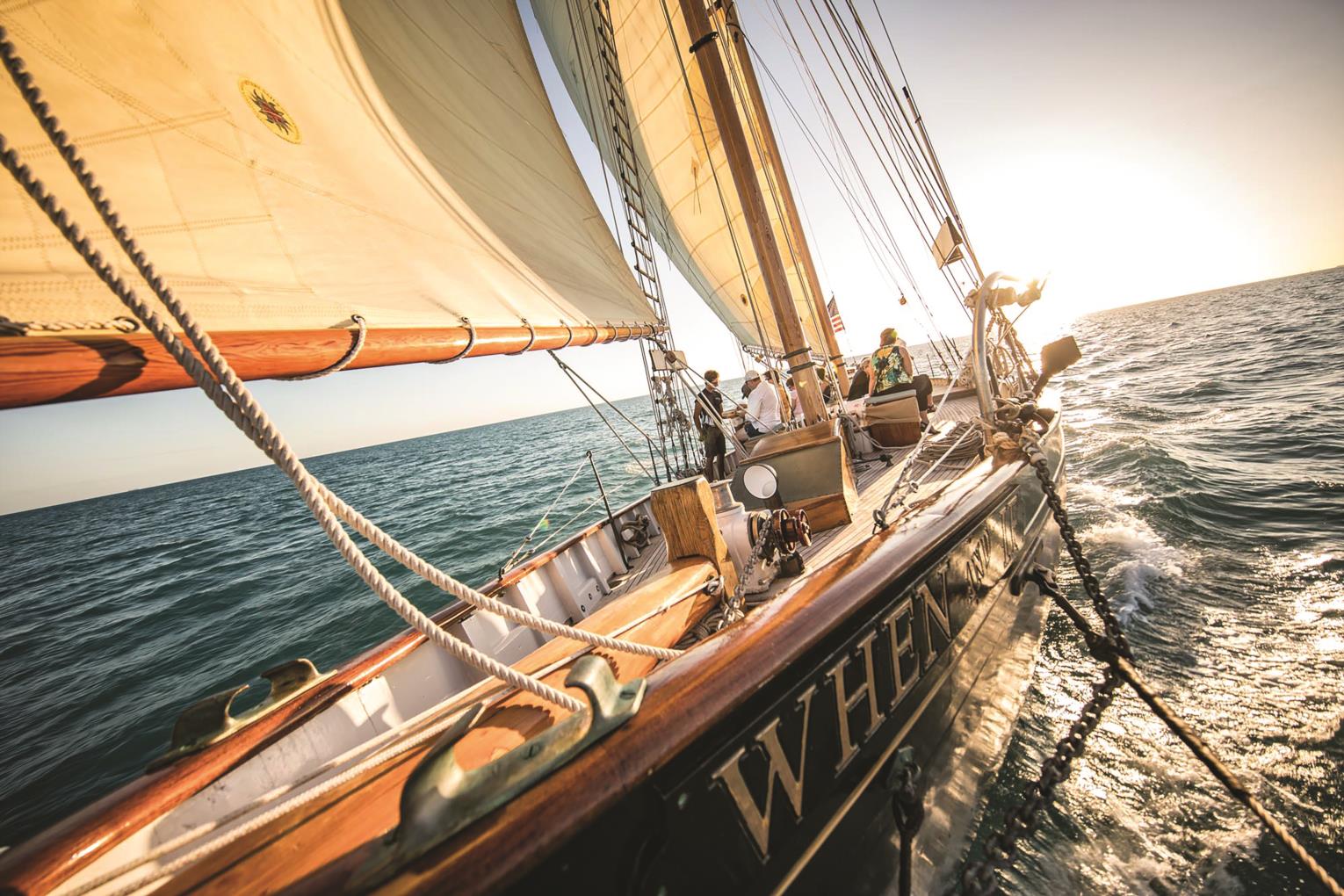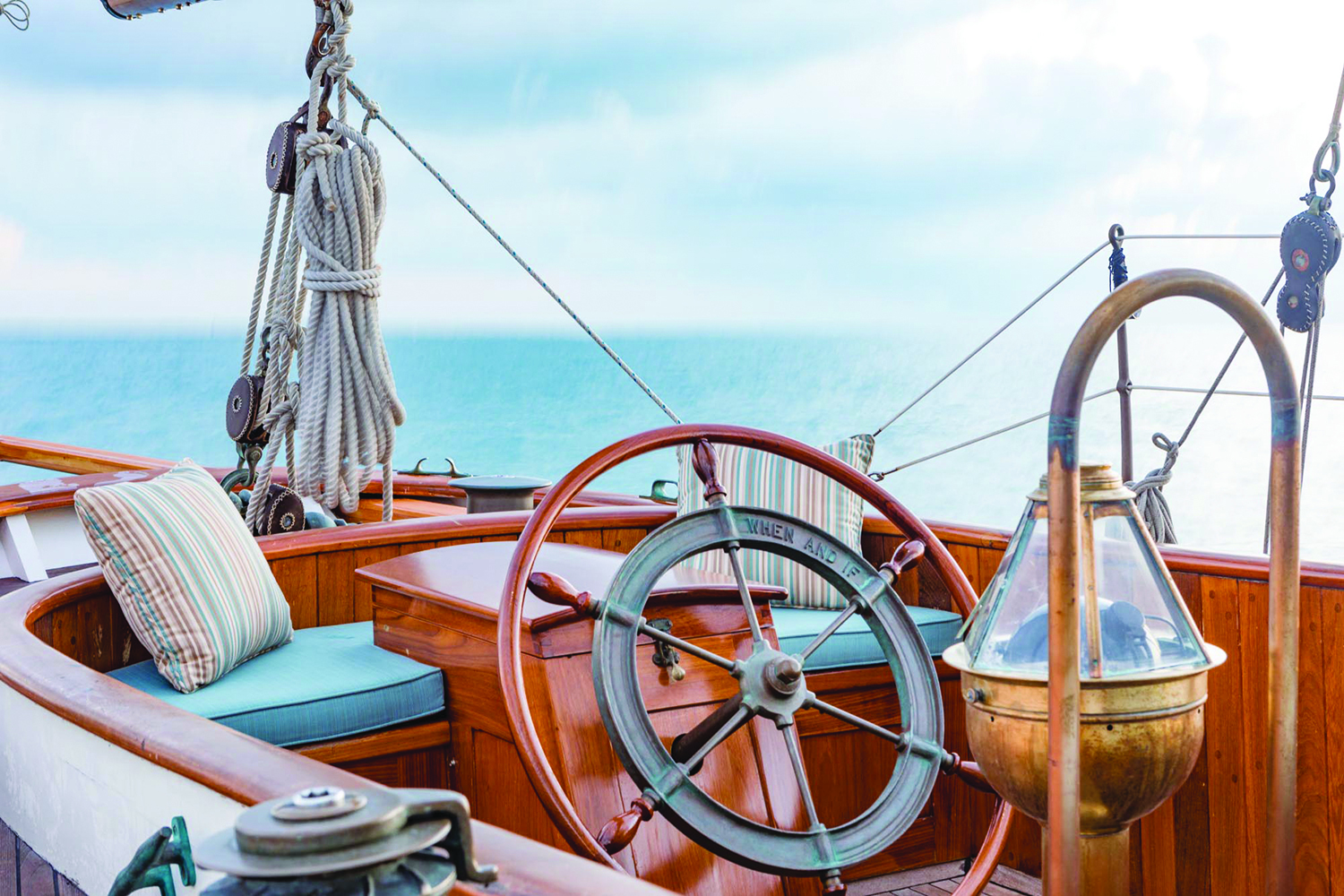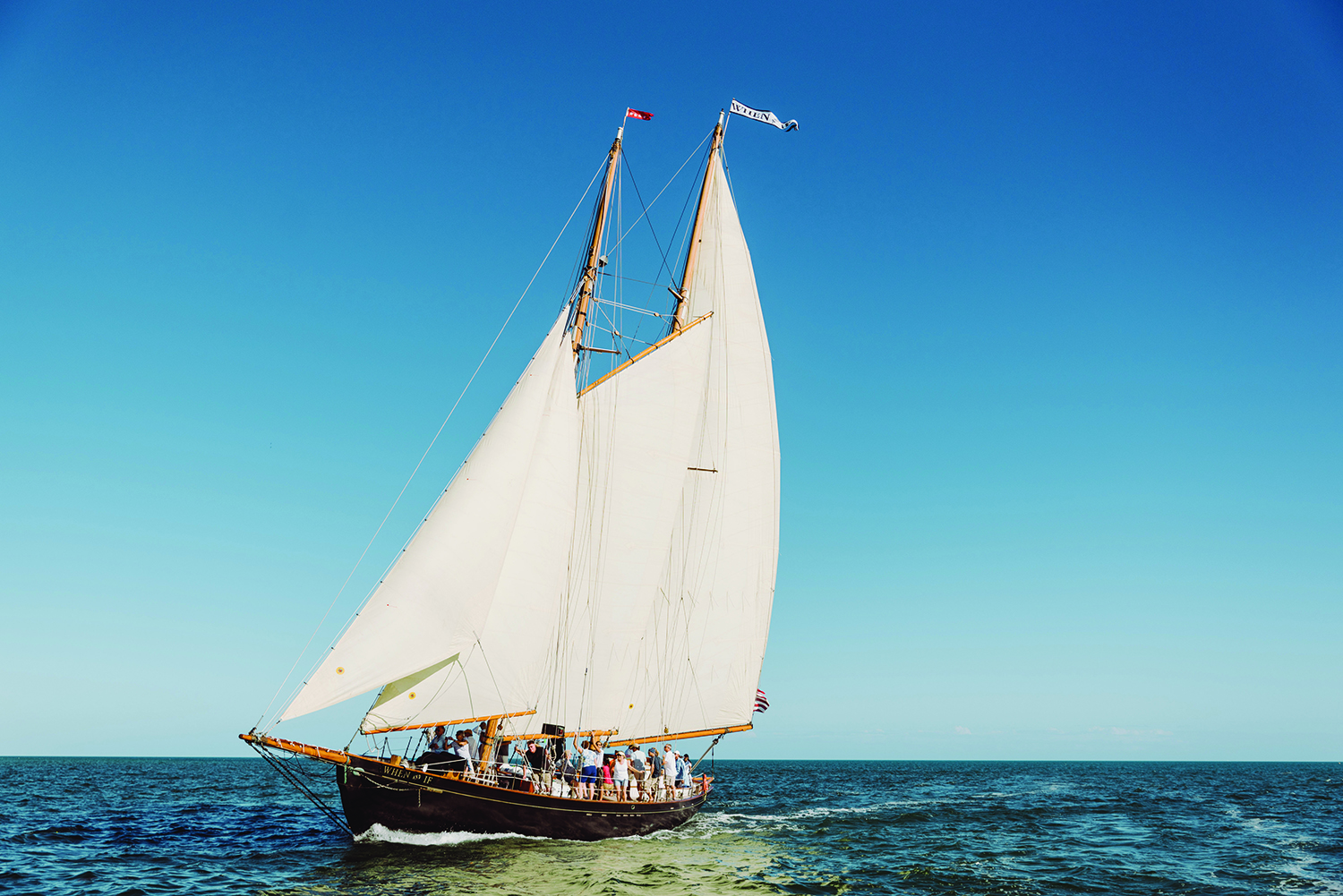Fresh back in Salem Harbor, Dylan Salzmann recounts a morning spent gliding out to Misery Island on 15-knot east-southeast winds, then back toward Manchester-by-the-Sea, where, upon tacking into Marblehead Harbor, he announced his arrival with a cannon blast. Considering that the yacht he was sailing, the When and If, was built for General George S. Patton Jr., the cannon—which fires 10-gauge blanks, not live ammunition—is a fitting way to call attention. Then again, a 63-foot racing schooner tends to draw a crowd on its own.
“Everywhere you go, people are turning their heads looking at this boat,” says Salzmann, the vessel’s 30-year-old captain. “People are on mega-yachts, on really nice boats of their own, and they’re admiring the When and If.”
The last 79 years has been a long, circuitous journey for the boat that Patton, who commanded the U.S. Army during the Battle of the Bulge, commissioned at the outset of World War II to circumnavigate the globe “when the war’s over and if I live through it,” as one foggy origin story of the boat’s name goes. Instead of embarking on a transoceanic sojourn, the boat changed hands and ports and, nearly 30 years ago, escaped catastrophe off Cape Ann. Now, after a series of overhauls, the When and If is in its full glory and has been anchored in Salem Harbor since June, where it offers up to four trips a day to ordinary citizens—trips that, in time, will help finance the voyage that Patton intended all along.
 Double-planked with Honduran mahogany and Alaskan cedar, shimmering with bronze fittings and fastenings, and sporting a main mast rising nearly 80 feet above the water, the When and If is a shining example of the talents of John Alden, the Boston-based naval architect who gained fame early in the 20th century for his regatta-winning yacht designs. Patton had sailed a smaller Alden schooner, the Arcturus, while stationed in Hawaii in 1937, and upon returning to Massachusetts he met with the designer to convey his vision: more space, more headroom, and the fortitude for round-the-world passage. The boat, built by F.F. Pendleton of Maine on top of white oak frames, entered the water in 1939, and Patton puttered around the North Atlantic before journeying to Chesapeake Bay—to hide the boat, Salzmann says, and prevent it from being consigned to the war in Europe. “So, there you go: Patton’s boat is a draft dodger,” Salzmann says with a chuckle.
Double-planked with Honduran mahogany and Alaskan cedar, shimmering with bronze fittings and fastenings, and sporting a main mast rising nearly 80 feet above the water, the When and If is a shining example of the talents of John Alden, the Boston-based naval architect who gained fame early in the 20th century for his regatta-winning yacht designs. Patton had sailed a smaller Alden schooner, the Arcturus, while stationed in Hawaii in 1937, and upon returning to Massachusetts he met with the designer to convey his vision: more space, more headroom, and the fortitude for round-the-world passage. The boat, built by F.F. Pendleton of Maine on top of white oak frames, entered the water in 1939, and Patton puttered around the North Atlantic before journeying to Chesapeake Bay—to hide the boat, Salzmann says, and prevent it from being consigned to the war in Europe. “So, there you go: Patton’s boat is a draft dodger,” Salzmann says with a chuckle.
After Patton died in a car crash in 1945, the When and If stayed in his family until 1972, when it was donated to the Landmark School, an establishment now in Beverly for children with dyslexia and other learning disabilities. Eighteen years later, while it was moored off of Manchester-by-the-Sea, a November gale snapped its line and smashed the boat against the rocks. A barge ferried the boat in pieces to Gannon and Benjamin Marine Railway on Martha’s Vineyard—among the best wooden boat shops in New England—for a two-and-a-half-year restoration. The boat passed among a series of private owners, sailing from Nantucket Sound to the Caribbean and becoming a fixture at events like the Antigua Classic Regatta. Doug Hazlitt, an Alden schooner aficionado, brought the When and If to the Finger Lakes for another major restoration, and recruited Salzmann’s brother, Seth—who, like Dylan, grew up in Key West and worked aboard schooners as far north as Maine—to become its captain. In 2014, Seth purchased the boat himself.

Dylan, who’s taken over captaining duties while Seth works aboard another boat, estimates he’s sailed the When and If 10,000 miles in the last six months. She’s tender and fast, stable and smooth, the captain says—a boat that plows through swells that rattle others. “They certainly didn’t shortchange her on construction; she was done right, and that’s why she’s about to turn 80 years old,” Salzmann says. He lives on board with a crew of three; the boat sleeps nine below deck, with two state rooms, a full galley, a shower and hot water heater, and other accommodations.
The waters off the North Shore don’t lack for scenery, and Salzmann says every week produces a new contender for greatest sail ever. Winds between 5 and 20 knots are ideal, and a typical trip means passing five lighthouses. The boat leaves the harbor with a minimum of six passengers, and up to as 32 for private parties or corporate events, and guests are welcome to raise sail and take the wheel. The trips are intended to fund the round-the-world voyage Patton never took, and Salzmann says they’re about four years out from making a 79-year-old dream a reality.
For now, there are other, more immediate plans for the When and If: competing in the Corinthian Classic Regatta in August and the Gloucester Schooner Festival on Labor Day weekend, plus more cruising, Salem Sound before heading back to Key West in early November ideally returning to Salem again next summer. Nearly every day Salzmann meets someone with a connection to the boat, including former Landmark School students who took the helm and folks whose parents sailed Patton’s schooner in the Caribbean.
And ultimately, beyond remaining a piece of North Shore history that took the long way home, the double-planked, head-turning, nearly 80-year-old grandeur of the When and If offers insight into an otherwise caustic military leader. “He had good taste,” Salzmann says. “That’s for sure.”
Visit sailwhenandif.com to check trip availability or to book a private cruise.

